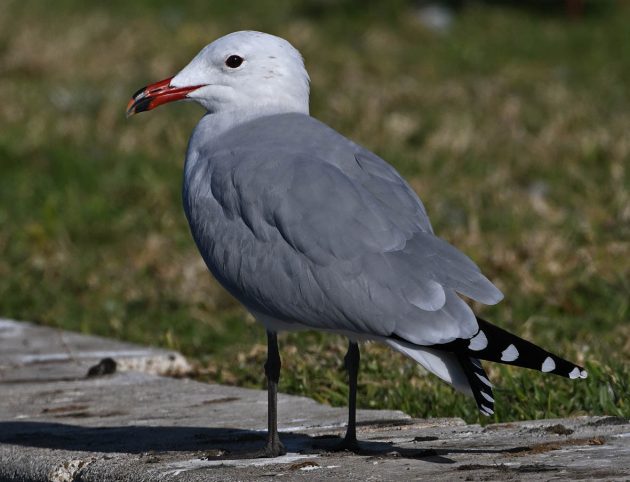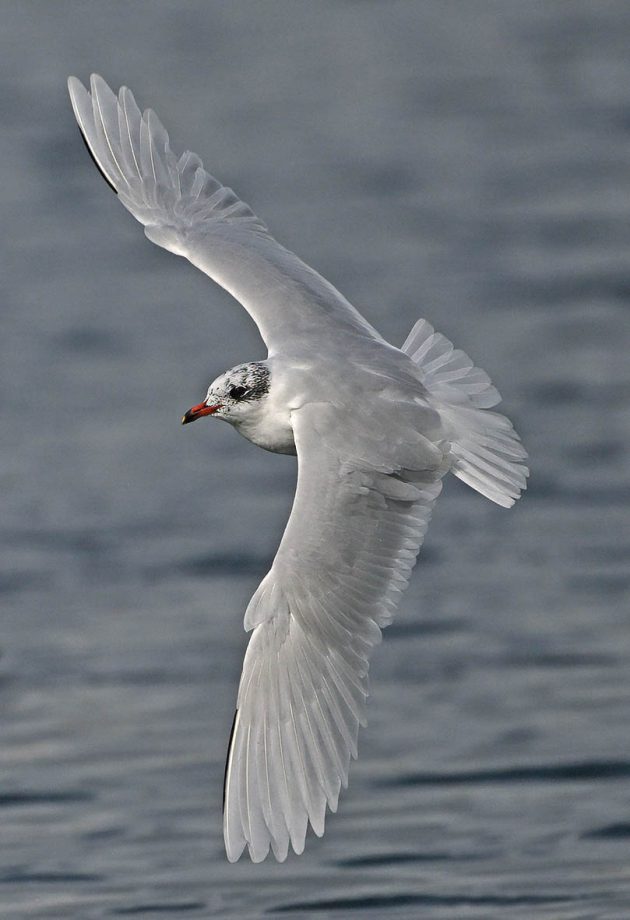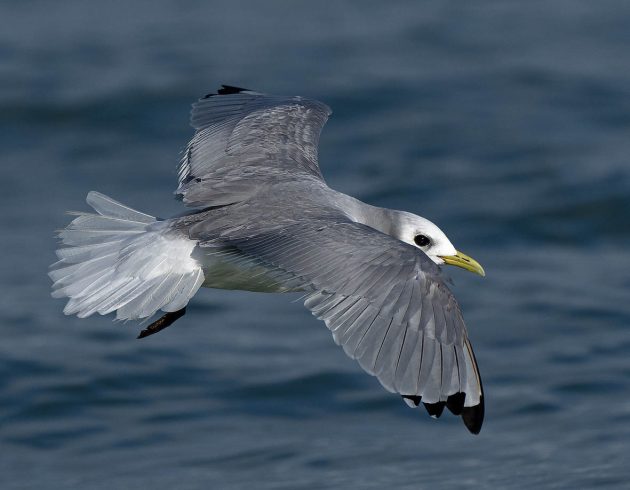
Gulls aren’t everyone’s cup of tea it seems but I find them a fascinating group, highly adaptable and capable of surviving and thriving in many situations. Here, in the south-west of the Iberian Peninsula, I am lucky to be able to see a wide range of gulls, particularly along the Atlantic coast at this time of the year. It is a time when arrivals from the north mix with local gulls, while others are returning from the south.
The Audouin’s Gull (Ichthyaetus audouinii) is an example of the latter. Some birds stay around the Strait of Gibraltar but the majority exit it in the summer and head to wintering grounds of the coast of West Africa. Adult birds start trickling back after the moult, advance parties ahead of the main entry into the Mediterranean in February.


Other Mediterranean species hang around all winter. Slender-billed Gulls (Chroicocephalus genei) match Audouin’s in elegance and they remain along our coasts all year. They are never numerous but are regular in in favoured localities. Their numbers are overshadowed by the huge concentrations of Mediterranean Gulls (Ichthyaetus melanocephalus) that make these coastlines their winter home. The gatherings, particularly in the estuary of the Guadalquivir River, reach many hundred birds at any one time. We mustn’t leave out, naturally, the large numbers of Black-headed Gulls (Chroicocephalus ridibundus) which arrive from north-western Europe, Scandinavia and eastern Europe.




The Atlantic coast receives thousands of Lesser black-backed Gulls (Larus fuscus) from the north. Many continue south towards Morocco and beyond but a large proportion remain. These birds are coming from north-western Europe and Scandinavia. Here they mix with the local Yellow-legged Gulls (Larus michahellis) which they outnumber. Curiously, once into the Strait of Gibraltar and the Mediterranean the pattern is reversed. It hasn’t always been so, though. I recall huge roosts of Lesser black-backed Gulls on Gibraltar in the seventies and large movements of these gulls over the Rock in response to cold weather. The decline in Lesser black-backed numbers here coincided with the rise of the Yellow-legged Gull colony in the late seventies.


The gulls that respond most reliably to bad weather, especially Atlantic gales, are the Kittiwake (Rissa tridactyla) and the Little Gull (Hydrocoloeus minutus). Some years we see very few but others they can be quite numerous as they are pushed onto the coast and even inland, many perishing in the process. In the past, we used to get large flocks of Little Gulls off Gibraltar after easterly gales. These must have been birds wintering in the Mediterranean but, sadly, we haven’t detected these for many years now.



Such weather also pushes in American gulls. In recent years these have included Bonaparte’s Gull (Chroicocephalus philadelphia), Laughing Gull (Larus atricilla), Franklin’s Gull (Larus pipixcan) and Ring-billed Gull (Larus delawarensis).

The picture is completed by small numbers of Great black-backed Gulls (Larus marinus) and Common Gulls (Larus canus) reaching here the southern edge of the wintering range. Scarcer, but also regular, are Glaucous Gulls (Larus hyperboreus) and, more rarely Iceland Gulls (Larus glaucoides), Herring Gulls (Larus argentatus) and, increasingly, Caspian Gulls (Larus cachinnans).















Never liked gulls until I saw Audouin’s Gull – what a beauty!